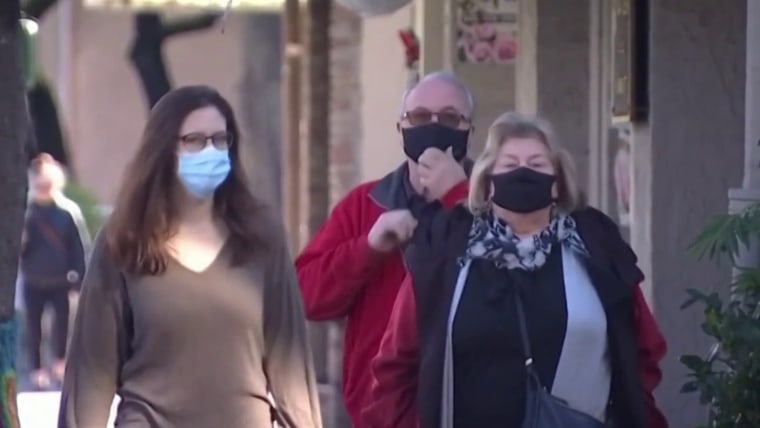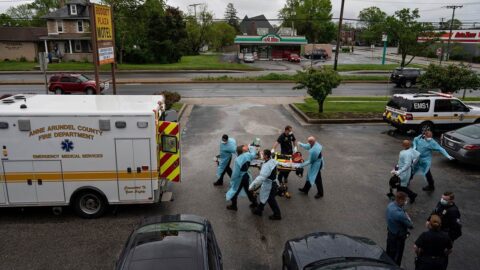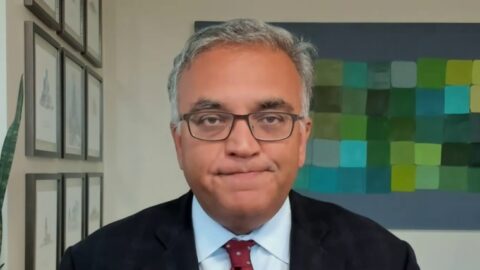As Covid cases and related hospitalizations fall nationwide, Americans — exhausted by two years of pandemic — are increasingly asking when masks can come off indoors.
“Not yet,” says both the Centers for Disease Control and Prevention and many infectious disease experts.
Full coverage of the Covid-19 pandemic
Last summer, the CDC recommended indoor masking for communities logging either an average of 50 Covid cases per 100,000 residents or a test positivity rate of at least 8 percent.
That guidance has not changed. And as of Thursday, 99.9 percent of U.S. counties met the criteria for indoor masking.
Beyond those basic measures, the CDC has listed other factors that can help communities determine when to relax masking protocols.
A CDC report from July 2021 also listed vaccination coverage and the virus’s impact on local hospitals as factors in considering when to ease up on masking.
CDC Director Dr. Rochelle Walensky acknowledged that Americans are eager to ditch the masks. “We know people are anxious,” she said Wednesday during a White House Covid-19 Task Force briefing.
Even though new cases are down by more than a third compared to last week, she said, many hospitals remain overwhelmed with Covid cases, particularly as the highly contagious omicron variant has taken hold. The seven-day average of hospital admissions is about 17,100 per day.
“Our hospitalization rates are still quite high,” Walensky said, adding that hospitalization and death data also should be key factors in determining if and when mitigation guidance, such as masking, should be lifted.
Other experts suggest that the metrics to determine mask use should not be limited to local areas, or even the United States.
“We need to think of this as a global virus,” Dr. Pedro Piedra, a professor of molecular virology and microbiology at Baylor College of Medicine in Houston, said.
Piedra suggested adding the consideration of how well the world at large is vaccinated against Covid-19, “so we don’t get these waves of viruses coming into the U.S.”
“I understand perfectly well that we’re trying to go back to having a normal society, but the truth is that this virus came not at our request,” Piedra said. “It came, and it has had a huge societal impact in terms of death and hospitalization in the U.S. and many other countries.”
Download the NBC News app for full coverage of the Covid-19 pandemic
One of the most glaring examples of the global impact of the coronavirus is the omicron variant, which became dominant in the U.S. within a single month after it was first detected in southern Africa.
What’s more, a potentially more transmissible subvariant of omicron, called BA.2, has now been detected in 1.5 percent of cases in the U.S., according to the CDC.
It’s another reason, Walensky said Wednesday, that it may be premature for the U.S. to lift most mitigation measures, including masking. She said that while Covid cases are declining in other countries that have detected BA.2, they seem to be falling at a slower rate.
That’s partially why the U.S. is currently keeping those measures in place, Walensky said, adding that many of those countries are also relaxing Covid restrictions.
Vaccines, when they include boosters, have been shown to be effective in reducing the risk for severe illness from Covid-19 even amid breakthrough infections from omicron. Less than half of the U.S. population eligible for a booster shot has had one, according to CDC data.
Still, that’s higher than many other countries, especially low-income ones.
“We’re not prioritizing vaccinating the whole world,” said Dr. Ranu Dhillon, a global health physician at the Harvard Medical School and Brigham and Women’s Hospital in Boston. “That’s going to be the solution to stopping new variants.”
Until then, masking across the U.S. remains part of the solution, Dr. Anthony Fauci, chief medical advisor to President Joe Biden, said Wednesday in the White House briefing.
“We can’t guarantee that there will not be another variant that challenges us,” he said, “but the best that we can do with that is to be prepared with the tools that we have: the vaccination, the boosting, the testing, the masking.”
Julia Raifman, an assistant professor and health policy researcher at Boston University, said there’s no quick fix to the pandemic.
“This pandemic is going to be with us for the long term,” she said. “We are going to have to grapple with continued surges due to new variants, seasonality and waning immunity.”
One of the best ways to manage continued spread of the airborne virus, Raifman said, is through masking. “We know what works.”
Follow NBC HEALTH on Twitter & Facebook.











Recent Comments